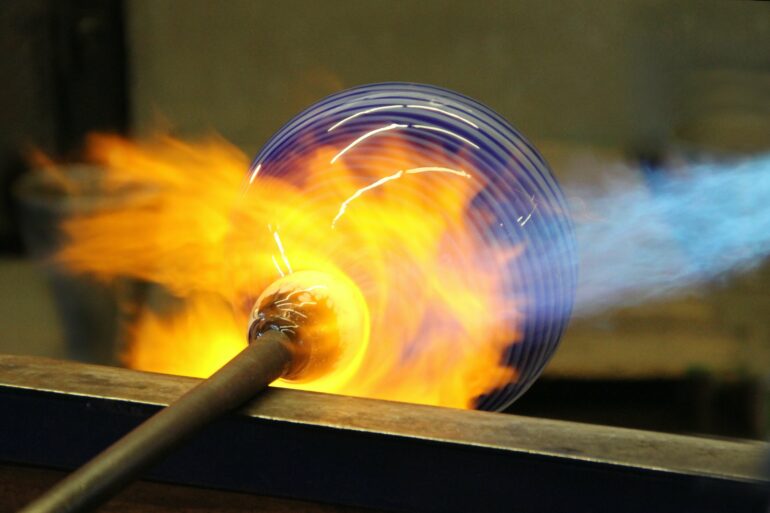Glasses are peculiar materials exhibiting excellent and well-known properties, but also some phenomena that are still not fully understood, even though they have been studied for more than a century. In particular, researchers have not yet reached a complete description of the glass formation process, upon cooling a liquid, and the converse transition of glass to a more stable state—called supercooled liquid—when it is heated up.
A study recently published in Nature Physics, led by members of the Department of Physics of the Universitat Autònoma de Barcelona (UAB) and the ICN2 Thermal Properties of Nanoscale Materials Group, sheds new light on this conundrum.
A glass is an amorphous solid, a state of matter characterized by the absence of a long-range order. In other words, it has not a crystalline structure as a “regular” solid, but its molecules cannot move as in a liquid either, due to very high viscosity. Since this state is not energetically stable, atoms or molecules in glasses tend to rearrange themselves over time, leading towards more stable configurations.
Such a reconfiguring process, which occurs naturally, is facilitated by an increase of temperature. When a glass is heated up to its specific transition temperature, its components acquire additional mobility, and the material becomes a supercooled liquid.
Conventionally, this transition from glass to liquid is described as a dynamic process in which atoms or molecules go through a cooperative relaxation. This means that regions of the glass having slightly higher mobility induce adjacent zones to progressively transit to a liquid state and reach an equilibrium phase. According to this theory, the increase of mobility is gradual, and the relaxation takes place in the whole material in a cooperative and almost uniform fashion. But is it always so?
The abovementioned study led by Prof Javier Rodriguez-Viejo and Dr. Marta Gonzalez-Silveira—group leader and senior researcher, respectively, in the ICN2Thermal Properties of Nanoscale Materials Group and at the Department of Physics of the Universitat Autònoma de Barcelona (UAB)—provides a more precise description of this phenomenon. The researchers demonstrated experimentally that, under specific conditions, the transition from glass to supercooled liquid can originate from a rapid formation of localized liquid regions, whose mobility is much higher than that of the rest of the material and which expand quickly.
This results in a stage where parts of the material are already in a stable liquid phase, while others are still glassy, something that does not occur with cooperative relaxation. For these two states to coexist in localized regions, the difference in mobility between the liquid and the glass parts must be very significant.
The authors demonstrated that both these mechanisms—i.e., the formation of expanding liquid regions and the cooperative relaxation—can take place when the glass is heated up, depending on the conditions of the process. Which of the two prevails is dictated by the specific temperature of the glass but does not depend on the procedure used to form the original glass or on its initial stability.
This study—whose co-authors are Ana Vila-Costa, Dr. Cristian Rodríguez-Tinoco and Marta Rodríguez-López—was made possible by the use of advanced laboratory techniques, such as nanocalorimetry, which allows observing glass dynamics at the nanoscale and performing measurements at temperature ranges and time scales that cannot be achieved by conventional methods. These results add new important pieces to the description of the complex glass-liquid transition process and open the way to new theories and in-depth studies.
A deeper understanding of the physics of glass will enable its properties to be exploited for new or improved applications. In particular, this exotic transformation mechanism is behind the very high stability of vapor-deposited ultrastable glasses, including the organic ones, and may therefore have a positive impact on the durability of organic devices or the production of metallic glasses with enhanced mechanical properties for wear- and corrosion-resistant coatings.
More information:
Ana Vila-Costa et al, Emergence of equilibrated liquid regions within the glass, Nature Physics (2022). DOI: 10.1038/s41567-022-01791-w
Provided by
Autonomous University of Barcelona
Citation:
Physicists shed new light on unanswered questions about glass-liquid transition (2022, November 3)



